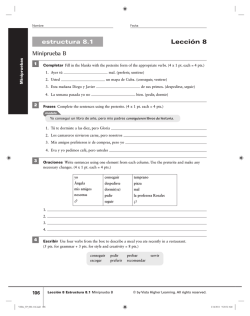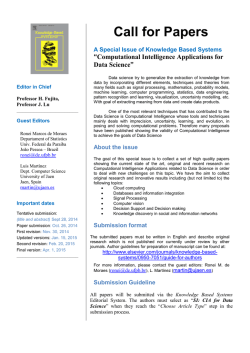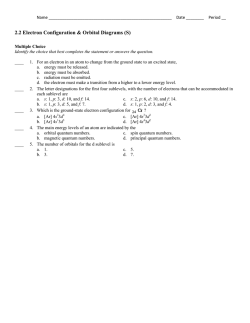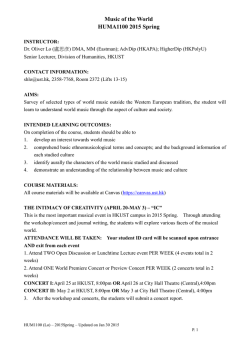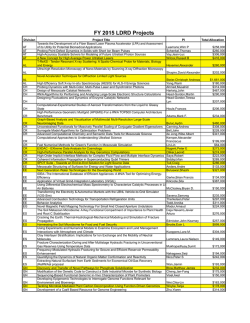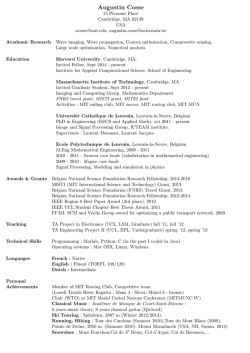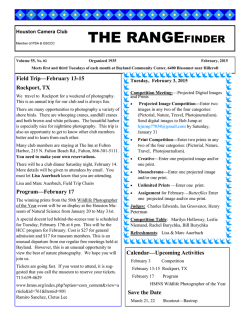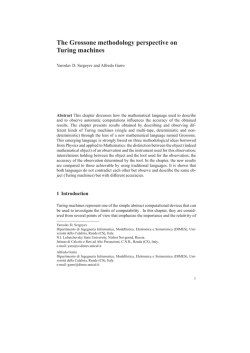
Homework 1
1 Computational Electromagnetics: HW 1 Instructions: 1. You can solve this homework individually, or in groups of two. 2. For the computational problems, attach a copy of the code with the submission. 3. Make reasonable assumptions, STATE them, and include any references you might have used. 4. [5 pts] are reserved for neat and systematic presentation of results. 5. Plagiarism ⇒ Course fail. Total points: [75]. Issued: 29 Jan 2015, Due: 10 Feb 2015. 1) In class we studied how a general Debye material could be simulated using finite difference time domain (FDTD). In this problem, you will consider a more realistic material based on the harmonic oscillator model of the electron-field interaction and it’s implementation in FDTD. In this model, the force on an electron, in addition to the usual −eE, is a spring like restoring force, −mω02 x2 , and a damping force, −mγdx/dt. (a) Sketch a quick derivation of the frequency dependent permittivity of a material using this model. You can refer to Ch 9.4 of Griffith’s Electrodynamics for clarity. Such a dispersion relation is also called a Lorentzian susceptibility. [5 pts] (b) Formulate a recursive scheme by which such a material can be modelled in FDTD. Comment on the computational overhead, and any other limitations that might arise. Assume that the material has only one resonance. [15 pts] Navigate to http://ab-initio.mit.edu/wiki/index.php/Meep to get familiar with meep, an opensource software for FDTD. In particular, read the tutorial on how to use this software http://ab-initio. mit.edu/wiki/index.php/Meep Tutorial. Pay special attention to how units are specified in meep: http://ab-initio.mit.edu/wiki/index.php/Meep Introduction#Units in Meep. IMP: In each problem, sketch your approach before getting into details. Now attempt the following. 2) Design a 1D computational experiment to quantify grid dispersion. Compare the dispersion you get with the analytical graph we saw in class. Hint: you want to study the role of the Courant parameter in this problem. [15 pts] 3) Design a 1D computational experiment to quantify the non-zero reflectivity of PML as a function of PML thickness at the optimal Courant parameter that you found out in the previous problem. [15 pts] 4) Simulating electromagnetic filters via a 1D computational experiment. We are interested in the reflection and transmission coefficients as a function of wavelength for two kinds of structures suspended in air. One, is a periodic arrangement of the type N AN AN AN AN AN AN , where N denotes a layer with refractive index 3.5, and A denotes a layer of air (note there are 7 layers of ‘N’). The second structure is based on the Fibonacci sequence (f1 = 0, f2 = 1, fn+2 = fn+1 + fn ). Let f1 = A, f2 = N , and interpret ‘+0 to be string addition. So, f3 = N A, f4 = N AN, f5 = N AN N A, and so on. Our√structure corresponds to f7 (compute this). The length of N to A is the golden ratio τ = ( 5 + 1)/2. Report the reflection and transmission spectra for some range λ0 ± 0.5λ0 that captures the interesting physics of the problem. For instance, the length of N can be chosen to be λ0 (but you could choose a different quantity). Be sure to include some air gap between the left pml and the source, the source and the structure, and the structure and the right pml. You will have to read the meep tutorial section on computing transmission spectra. [Trivia: Such a structure has recently been used in fabricating quantum well structures: http://link.aps.org/doi/10.1103/PhysRevB.77.113306] [20 pts]. Instructor: Uday Khankhoje EEL766, 2014-15 Sem II
© Copyright 2025
